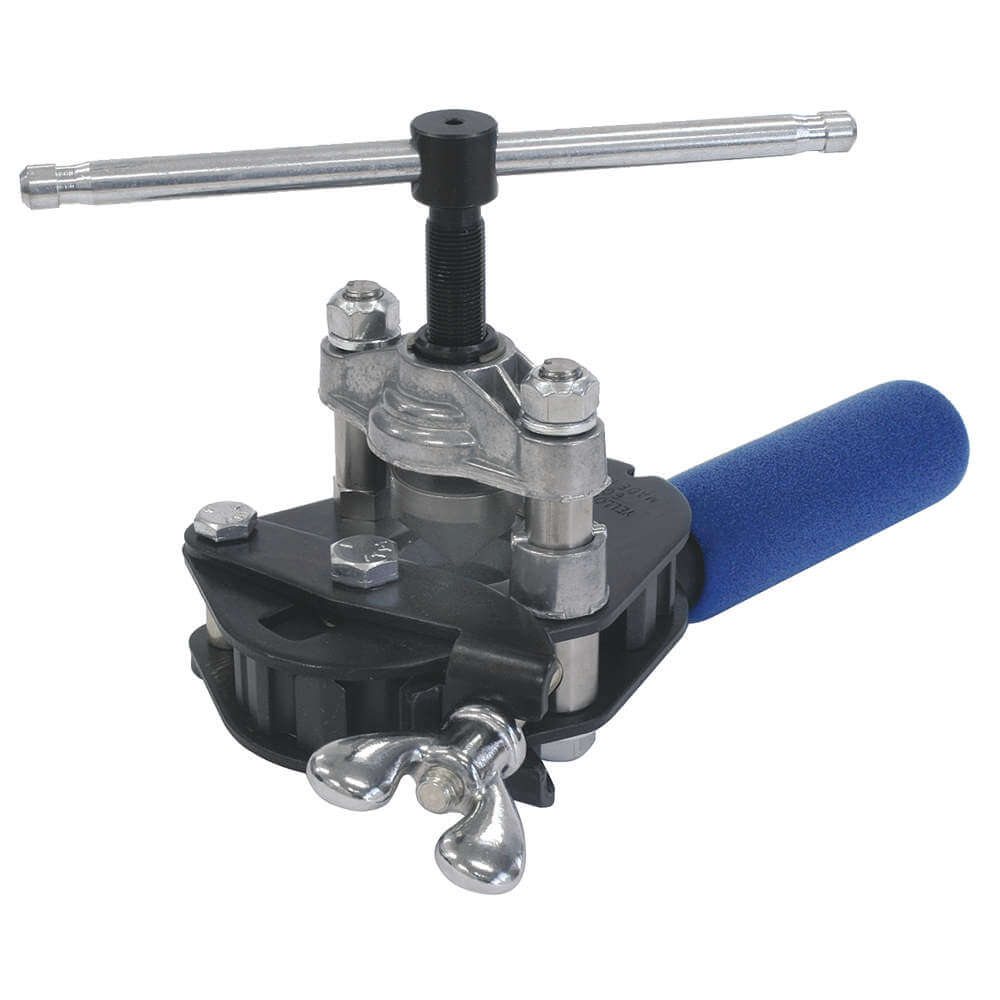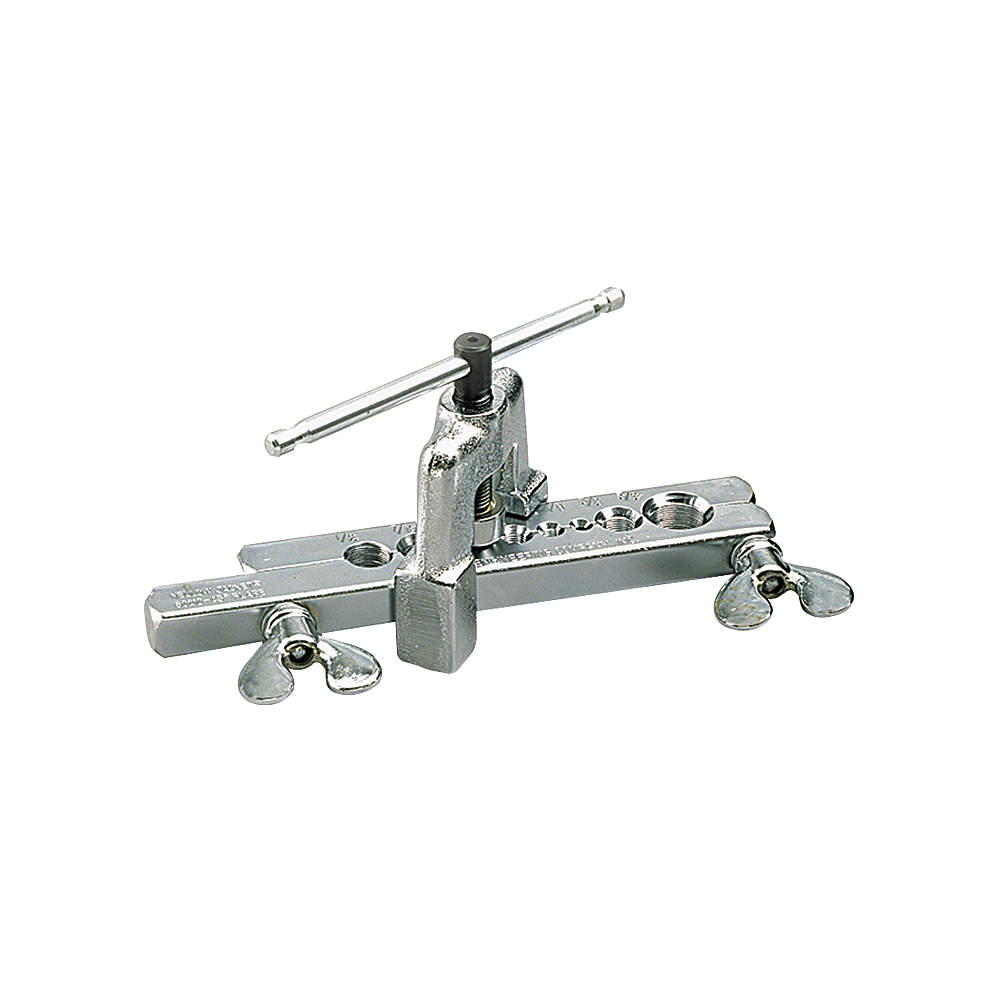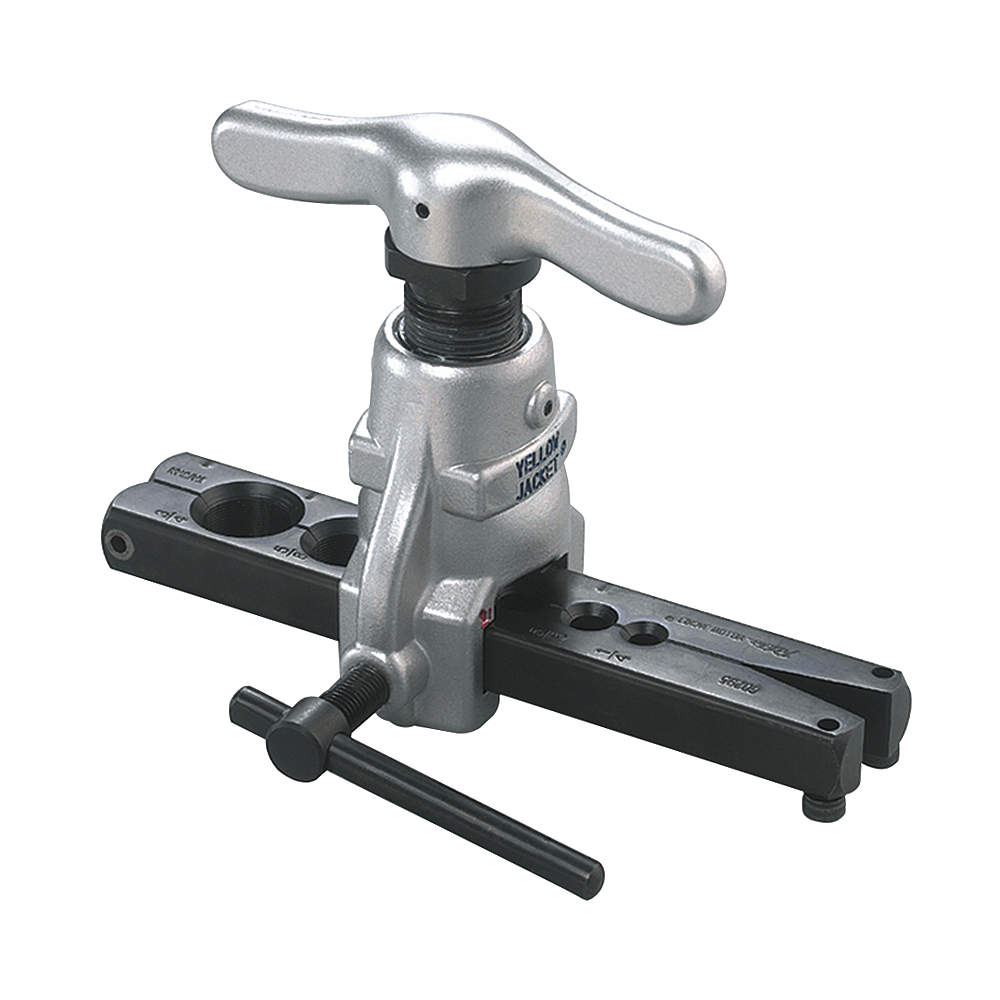Flaring and swaging tools are used for connecting copper tubing and gas pipes. Flaring tools use pressure for making a fabricated mechanical joint to seal copper tubing with a flare connection. The most common flaring tool used for copper tubing is the bar-type tool having multiple bits for accommodating different tube or pipe sizes. These piping and tubing flares are not interchangeable. Piping flares have a 37-degree angle, while tubing flares have a 45-degree angle. Double-flare tools are ideal for high-pressure applications, such as air conditioning and refrigeration, whereas single-flare tools are ideal for non-high-pressure applications. Swaging tools utilise pressure for expanding or stretching the end of a copper tubing piece so that it can fit over another tube of the same diameter, making a permanent brazed connection. The tube swaging tends to increase the inside diameter of the tubing, eliminating the leakage and requirement for additional fittings. A flaring tool kit often comes with die blocks or swaging bits for converting a flaring bar into a swaging bar. Yellow Jacket 60278 flaring tool is designed for soft copper tubing having outer diameters ranging from 1/8 to 3/4 inches. This Yellow Jacket 60278 mini-split flaring tool creates a 45-degree angle in copper tubing to provide a tight seal against the flare fitting.
Uses:
Yellow Jacket 60278 flaring tool is designed to connect gas pipes and copper tubing for tube working, HVAC/R service, as well as electrical & automotive applications.
Working Mechanism:
Measure the copper tubing and cut up to the desired length with a tubing cutter. Clean the tubing end of burrs with a pipe reamer, a deburring tool or sharp knife. While flaring, start by choosing the tool accessories which match the tube diameter to be flared. Place the tubing inside the clamp or die block of the flaring tool. The end of the tube can be extended up to 1/8 inches from the flaring tool. Now, tighten the wing nuts for securing the tubing in the tool. After matching the tube diameter to the correct sized punch, put the narrow end inside the tube. Make sure that it's aligned perfectly straight. Strike the punch end with a hammer til the tube meets the stop. Now, attach an expander head that matches the tube diameter to the end of the tool. Fit the head into the tube end and gradually squeeze the handles. Finally, release when the tube end is fully swaged.
Features:
- Customers looking for a built-in clutch release variant of flaring tool can consider the brand's 60295 flaring tool to prevent over-torquing.
Compatible Accessories:
- Yellow Jacket 60278 flaring tool is compatible with the brand's 60214 wiring nuts, 60278 handle grips and 60278 yoke assemblies.
Frequently Asked Questions:
Q. Can Type L copper be flared?
A. Yes, It is quite possible to flare Types L, K or M rigid or hard temper tubes, but before flaring, it is mandatory to flare the tube end. Make sure that the copper tube should be cut with an appropriate tubing cutter.
Q. Which products are manufactured by swaging?
A. Swage tools are suitable for shaping the metal in various ways, such as enhancing its look and fit for the desired applications. Swaging facilitates the manufacturing of plastic and electronic products, such as pipes, cables, saw blade teeth and manufacturing firearms.
Q. What is the difference between a swaged and a flared end tube?
A. The main difference is that flaring is shallower and has a different shape. It generates a funnel at the end of the tube. On the other hand, the swaged end tube is deeper, and its diameter can be expanded further along the tube for creating a flute shape.
Q. Do you use pipe sealant on flare fittings?
A. Do not use a pipe sealant or Teflon tape on flare ends as it will not be a leak-free seal. Always keep the flare end of fitting free from oil, grease and thread sealant. If the fitting is installed incorrectly, remove the fitting, reapply sealant & reinstall as per instructions.
Q. What is flaring and swaging?
A. Swaging and flaring are two similar processes when applied to a copper tubing or pipe. They are used for widening the end of a tube to allow new connections.
Q. Why is the thread sealing compound not used on flare connections?
A. Because you will not get a leak-free seal. Burrs on the pipe, bad flare or wrong size flare can all cause leakage in flare fitting. The most common reason for their leakage is overtightening.
 Change Country
Change Country





 Trade pricing is available for
Trade pricing is available for  Order Value should be £500+
Order Value should be £500+